McLaren goes back to the future with the new super-fast three-seater Speedtail
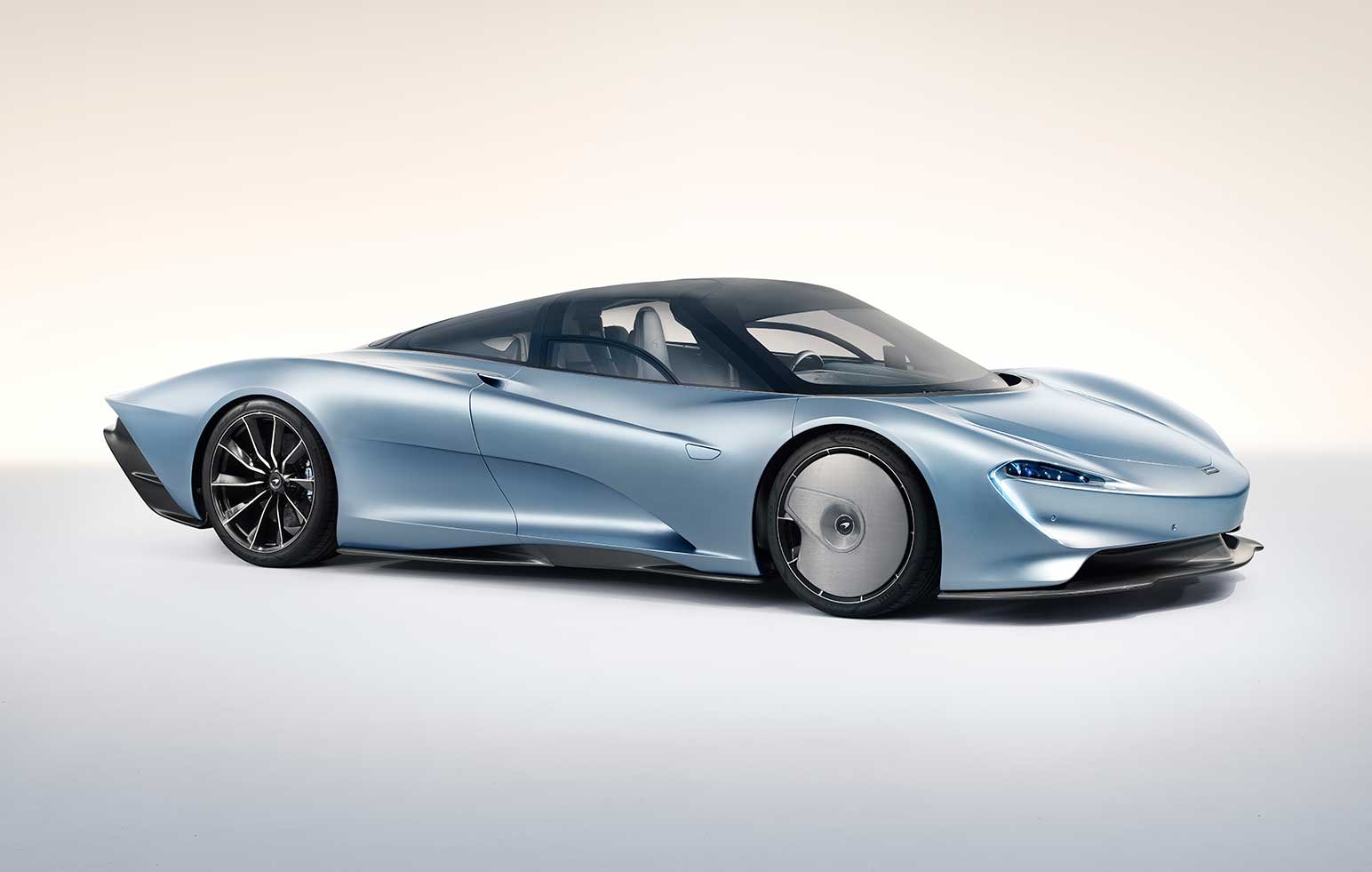
In the early 1990s, Gordon Murray convinced Ron Dennis to help realise his vision for the world’s fastest road car. Subsequently, the racing car engineer, and McLaren’s former owner, engaged vehicle designer Peter Stevens to conceive the F1. The car has since gained cult status for its pioneering light structure, superb aerodynamic shape, and unconventional three-seat design. The F1, and what it represents, is at the heart of McLaren Automotive thinking.
The Speedtail honours the F1. It is McLaren’s first hyper gran turismo, and with speeds of up to 250mph, the marque’s definitive road car. It sits within the company’s pinnacle Ultimate family; production numbers are kept strictly limited to 106 – all pre-sold for their 2020 customer delivery – with prices starting from £1.75 million.
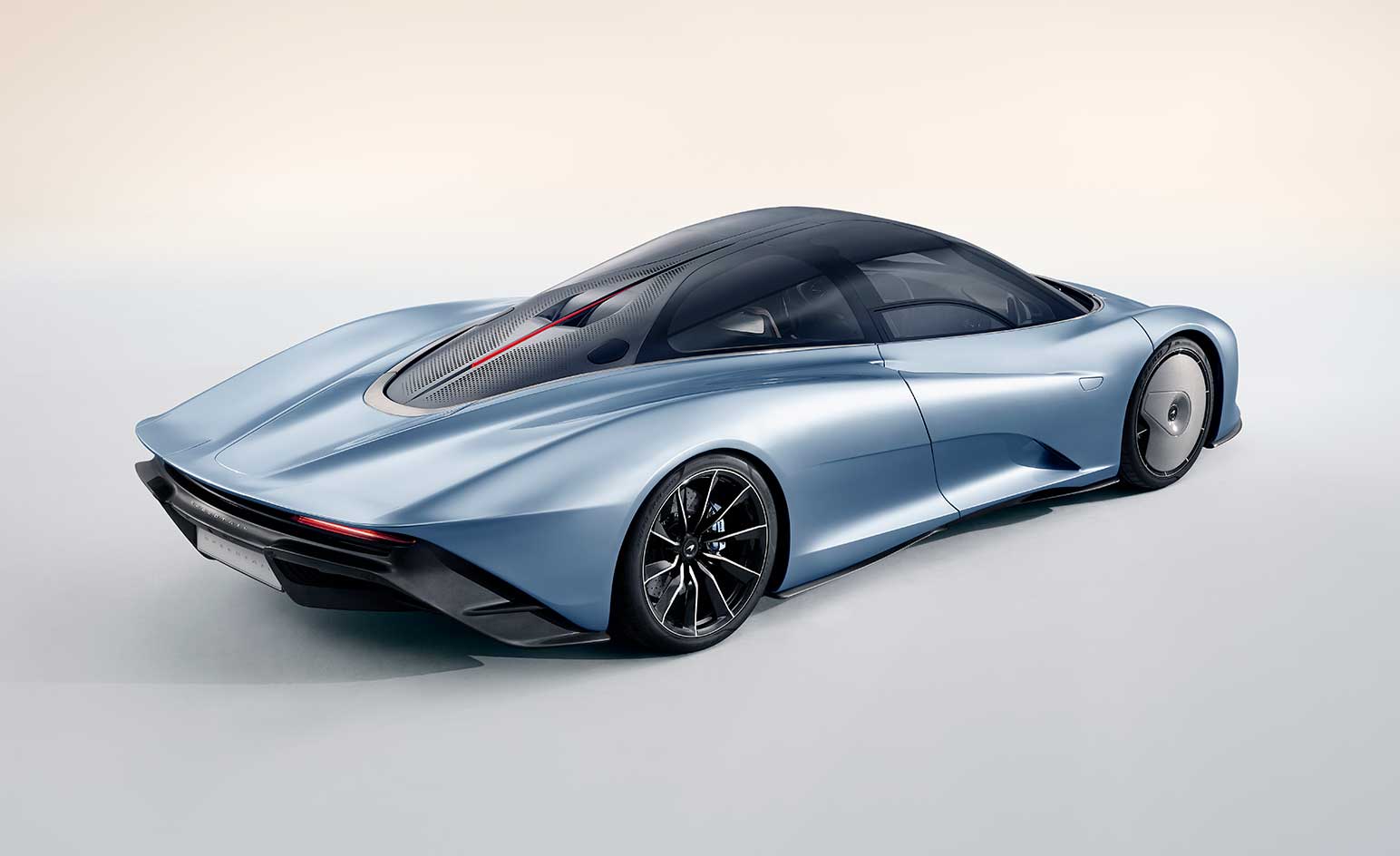
A petrol-electric hybrid engine provides power and is housed within a lightweight carbon fibre body, ‘reminiscent of the sleek streamliners that once set world records,’ offers Mike Flewitt, the company chief executive. The Speedtail delivers a combined 1,050ps for acceleration to as much as 186mph in as little as 12.8 seconds – faster than the current P1, McLaren’s most powerful machine. For extra force, the ‘velocity’ mode optimises the powertrain and active aerodynamic, lowering the body by 35mm so the highest point of the car is just 1,120mm from the road.
The Speedtail is slender and long at 137mm. It is the most aerodynamically drag-efficient McLaren road car built. This is largely due to the dramatically elongated carbon body and teardrop-shaped cockpit which keeps air close to the sculpture and directs it smoothly away. A large single piece of glass covers the volume in place of structural panels. The engine is covered in a carbon fibre sheet with a grading colour in a technical carbon weave. The tapered rear features flexible carbon spoilers that lift and adjust according to driving style to further assist drag. Visually they are a great addition too.
Inventive elements add to the aero-efficiency of this car. For instance, retractable digital rear view cameras replace traditional wing mirrors. Elsewhere, there are static carbon aero covers on the front bespoke ‘P-Zero’ Pirelli tyres, fundamental for keeping air attached to the body. Asked if they were tempted to cover the rear wheels too, design director Robert Melville admits having considered doing so, they decided the non-conformist aesthetics outweighed the small aero benefit. ‘It adds visual mass to the car,’ he says.
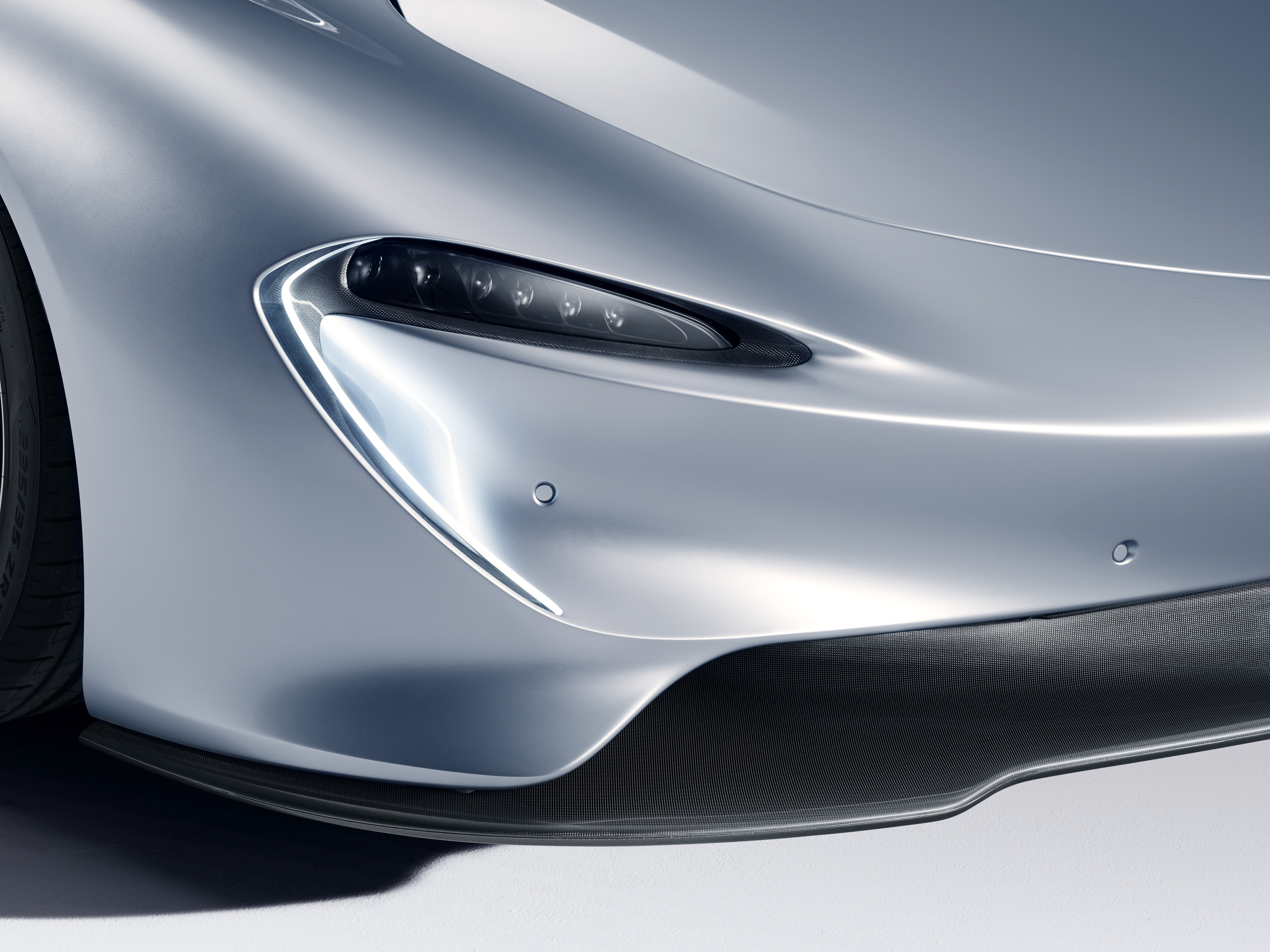
Then there are elements that showcase the exceptional technical skills of the materials team at McLaren. The front splitter, diffuser and side skirts, for instance, are finished in a titanium deposition carbon fibre material that has just 1000 fibres per thread, instead of the usual 3,000. The jacquard weaving process creates an intricate pattern, and the titanium can be anodised in a specified colour, interwoven with a personalised pattern. Then, the McLaren badge and Speedtail name features Thin-Ply Technology (TPT) – a technique developed with the Swiss watchmaker Richard Mille – and are made in 18-carat white gold.
Unique, playful and simply brilliant is the F1-inspired central driving position. ‘As a boy, I had a picture of the car on my wall and this has been dream project for me,’ says Melville as we sit inside the car. Responding to his brief to design a three-seater hyper-GT, he says, ‘it had to be the purest expression of what you need from a car like this. For McLaren, design must be authentic – the proportions should express the car, and every material used has to be right for this car.’
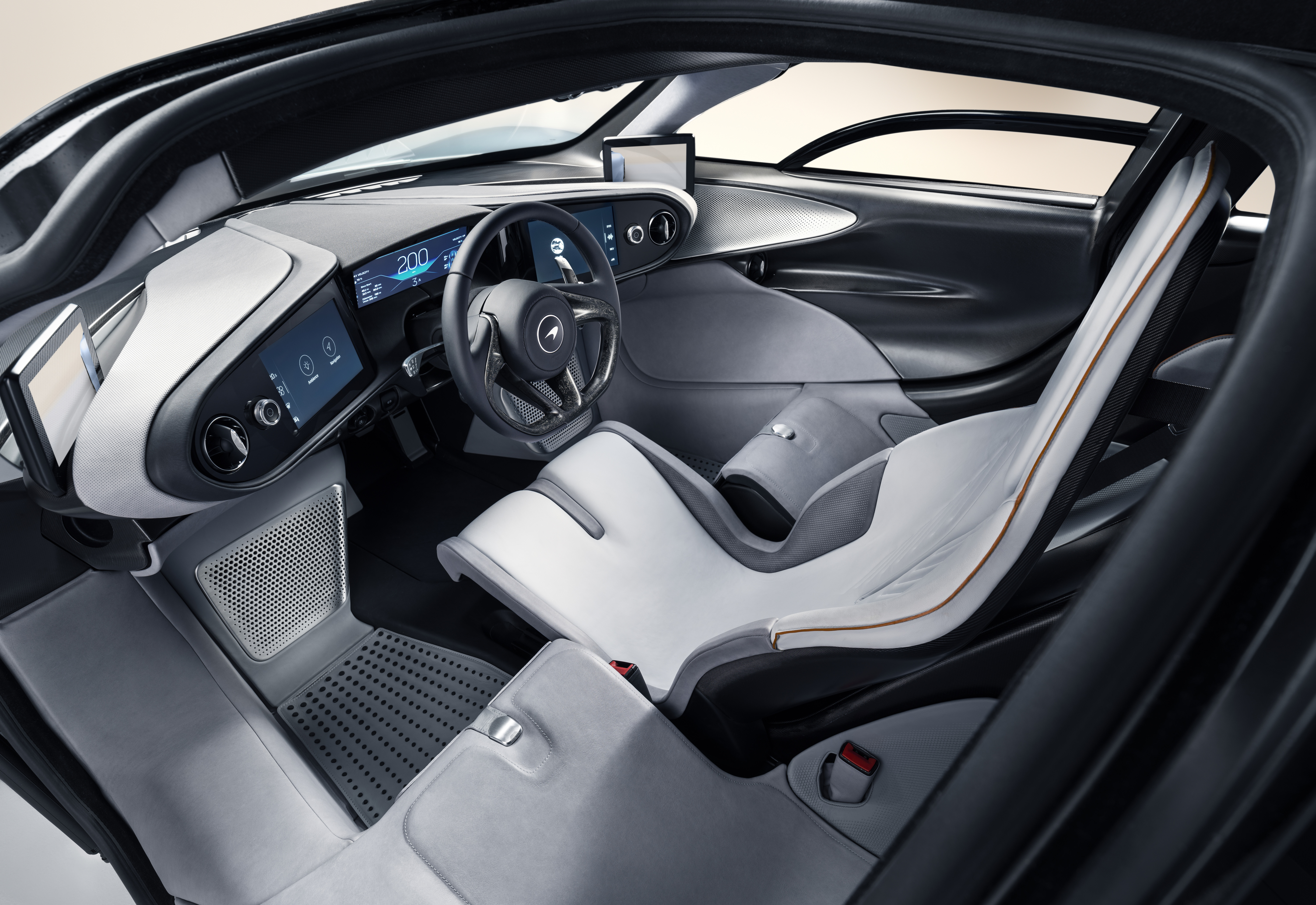
Early McLaren road cars were austere inside. This is no longer, with the Speedtail cabin providing a premium, comfortable, sporty and techie space. The sculpted slim seats are covered in leather and are LED embedded. The central driver seat is adjustable; the two rear ones, fixed bucket seats. A couple of digital screens on either side of the driver provide the necessary road information and infotainment. Then, a switch darkens the top of the windscreen eliminating the need for sun-visors.
There are a couple luggage compartments positioned front and rear, for some 162-litres to fit one suitcase and two smaller bags – customised in-house by McLaren. Finally, interwoven carbon titanium deposition materials and digitally embossed, full-aniline and lightweight leathers can be specified through McLaren Special Operations. Melville admits, ‘the material story is like nothing else we’ve done before.’
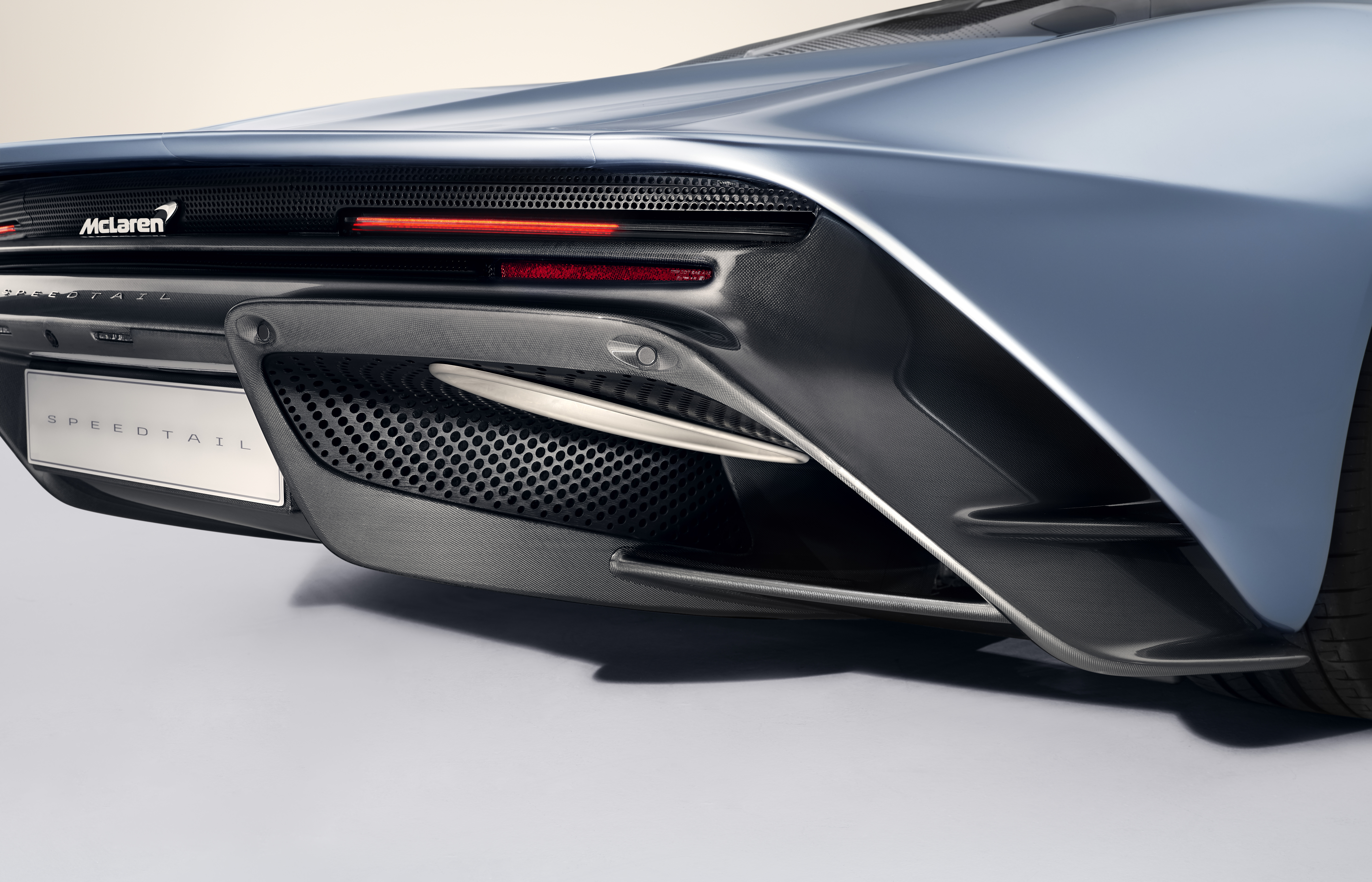
Speedtail is the first of 18 new cars and derivatives promised from the Track25 masterplan, announced earlier this year. McLaren appears to be on a racetrack, creating super car after super car, each more accomplished than the one before – as though the company is involved in an internal competition to create the penultimate motor car for this century. Admittedly the McLaren philosophy is compelling. It is about continually pushing the limits of technology and design; it is about exploring new shapes, discovering new materials – weaving ultra-light carbon in ways no one has dared. The speed of growth has been fast, and perhaps somewhere along the line the excitement of innovation has overshadowed other areas.
In this context, the Speedtail is a timely product. This is a supremely accomplished car, returning to McLaren that sense of grace and beauty and allure of the automobiles of former times. There is drama in the teardrop shape and tapered rear; there is humour in the three-seat design. We even detect a little of the spirit of the brilliant Bertone cars of the 1970s. ‘It is classical futuristic – something in the past taking on the future,’ offers Melville in agreement, ‘rooted in the history and about the future.’
Wallpaper* Newsletter
Receive our daily digest of inspiration, escapism and design stories from around the world direct to your inbox.
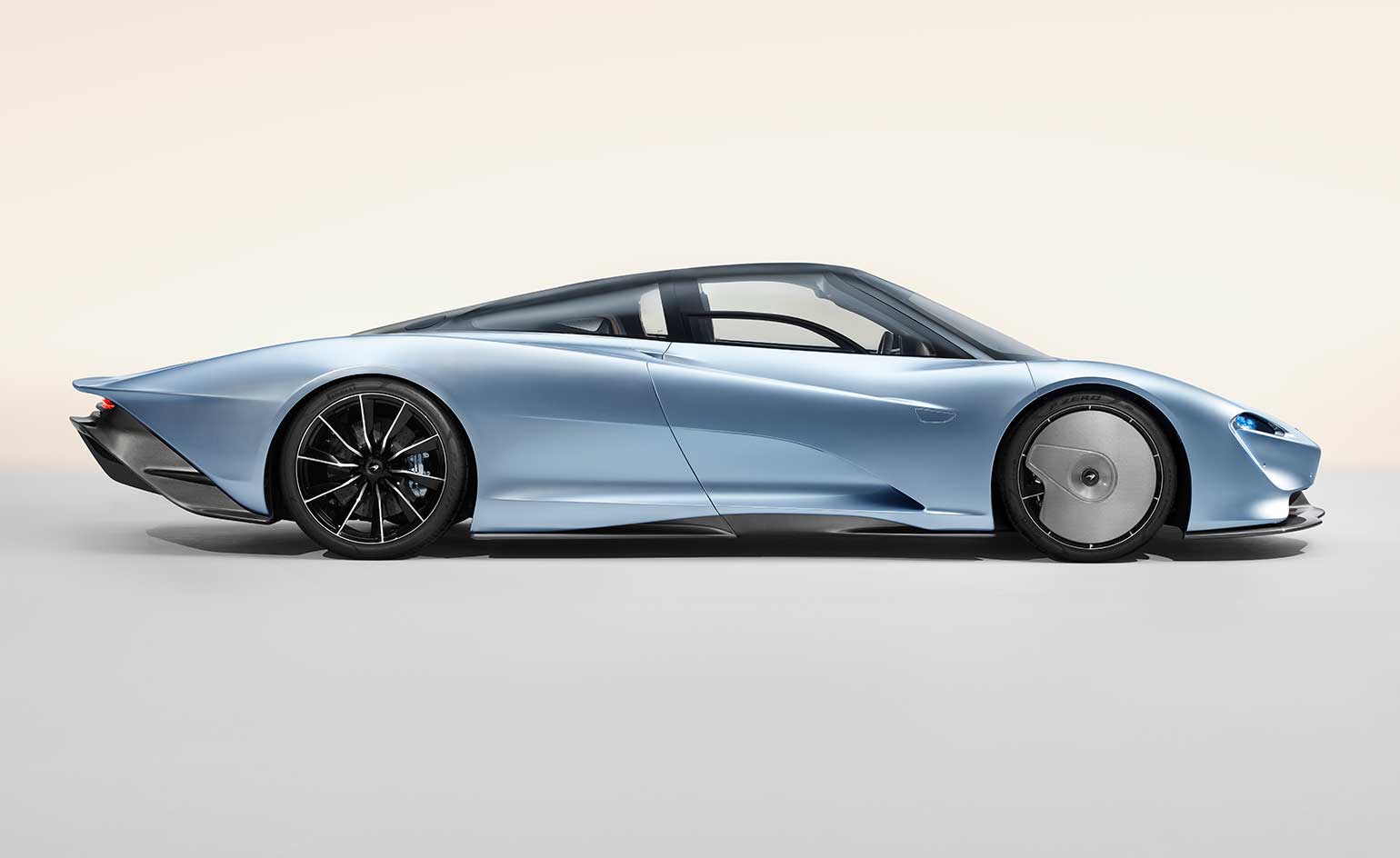
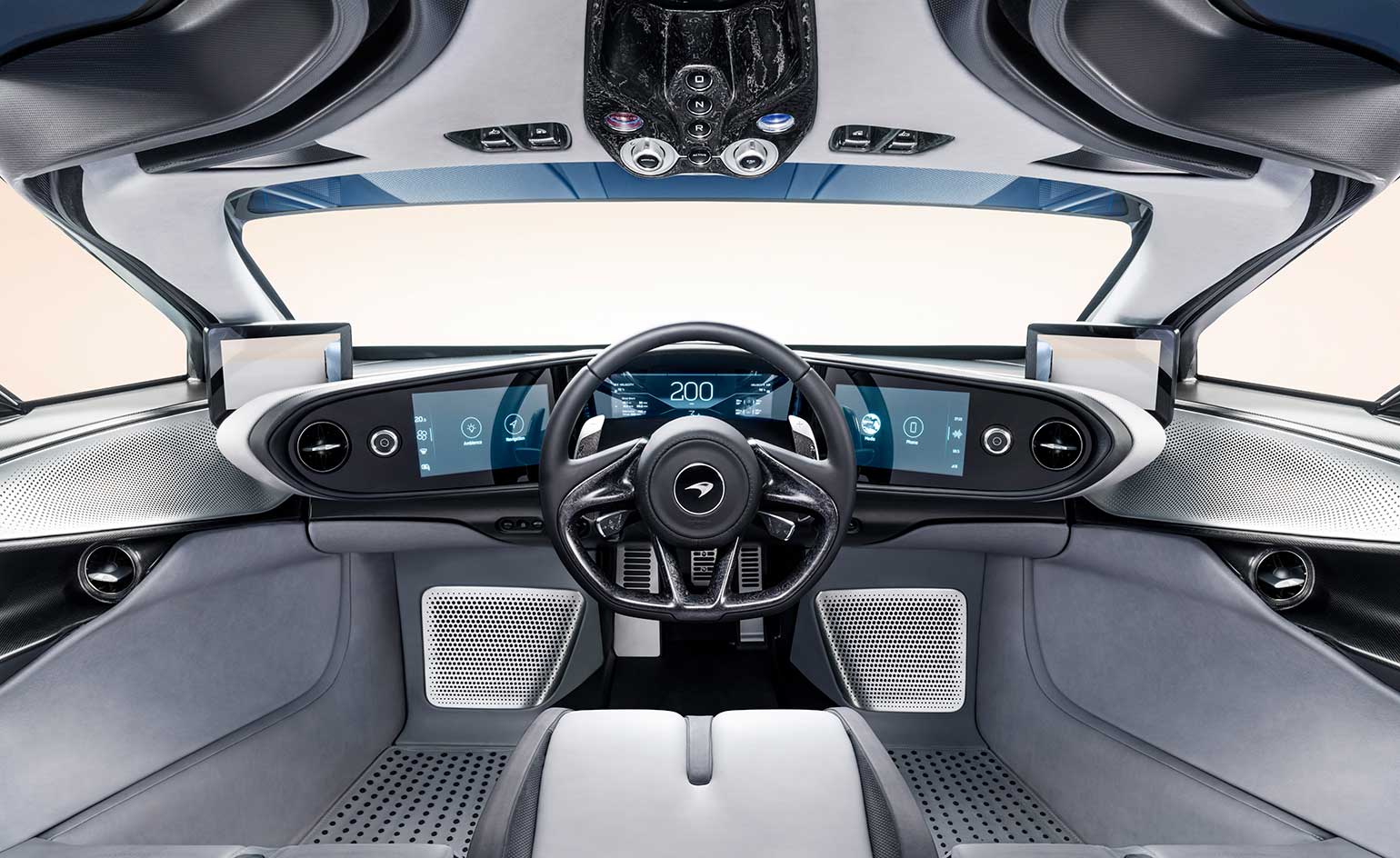
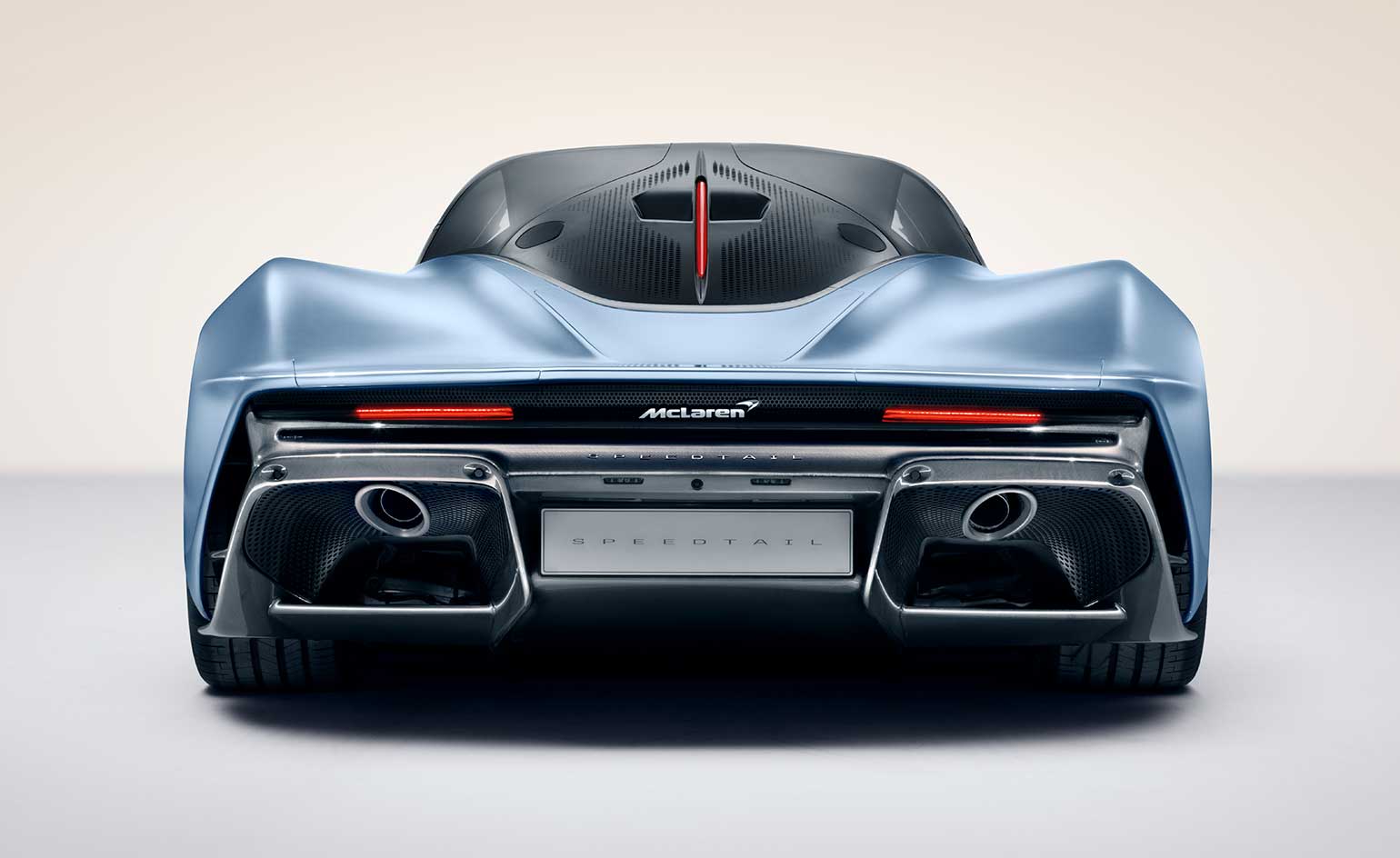
INFORMATION
McLaren Speedtail from £1.75m. For more information visit the McLaren website
A writer and editor based in London, Nargess contributes to various international publications on all aspects of culture. She is editorial director on Voices, a US publication on wine, and has authored a few lifestyle books, including The Life Negroni.
-
 Put these emerging artists on your radar
Put these emerging artists on your radarThis crop of six new talents is poised to shake up the art world. Get to know them now
By Tianna Williams
-
 Dining at Pyrá feels like a Mediterranean kiss on both cheeks
Dining at Pyrá feels like a Mediterranean kiss on both cheeksDesigned by House of Dré, this Lonsdale Road addition dishes up an enticing fusion of Greek and Spanish cooking
By Sofia de la Cruz
-
 Creased, crumpled: S/S 2025 menswear is about clothes that have ‘lived a life’
Creased, crumpled: S/S 2025 menswear is about clothes that have ‘lived a life’The S/S 2025 menswear collections see designers embrace the creased and the crumpled, conjuring a mood of laidback languor that ran through the season – captured here by photographer Steve Harnacke and stylist Nicola Neri for Wallpaper*
By Jack Moss
-
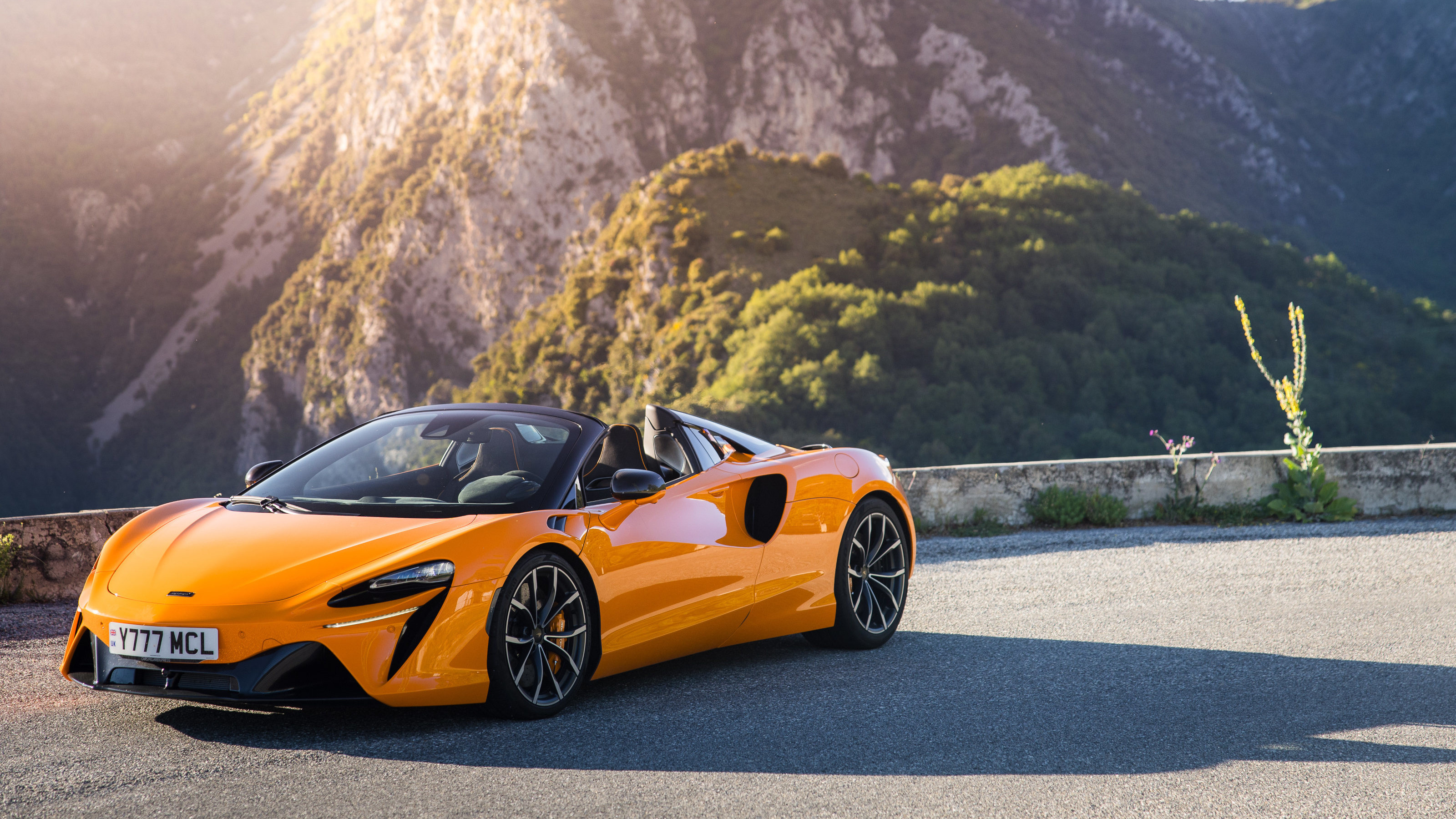 A technical tour de force, McLaren’s Artura Spider makes an unconventional supercar
A technical tour de force, McLaren’s Artura Spider makes an unconventional supercarMcLaren prides itself on technical perfection. Its newest series production supercar ticks all the right buttons but demands you make an emotional commitment
By Jonathan Bell
-
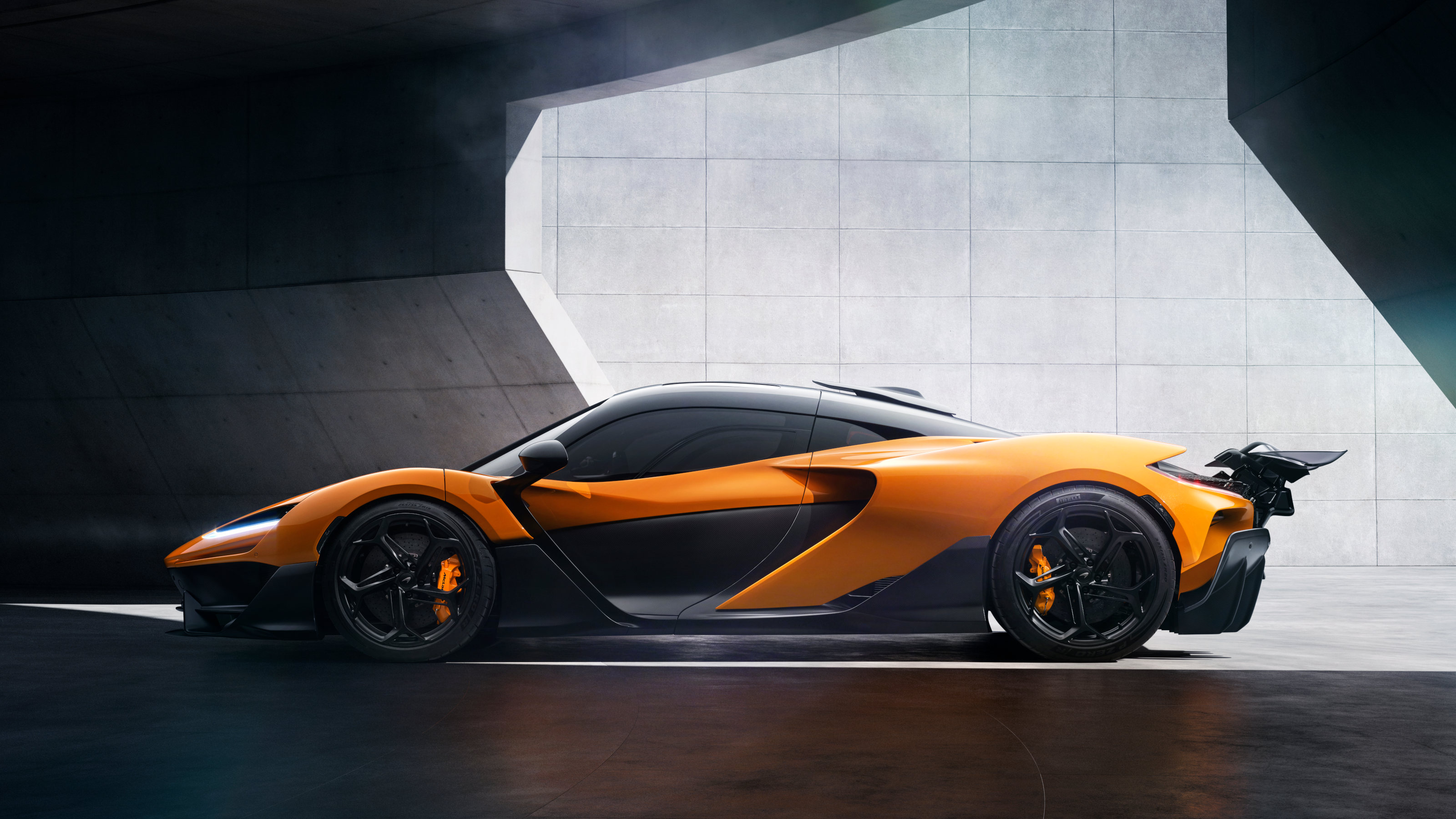 The McLaren W1 is the latest in the sports car maker's tech-saturated Ultimate Series
The McLaren W1 is the latest in the sports car maker's tech-saturated Ultimate SeriesFirst F1, then P1 and now W1, McLaren Automotive reveals its latest limited-edition supercar to the world, a £2m concoction of hybrid power and active aero that is, unsurprisingly, already sold out
By Jonathan Bell
-
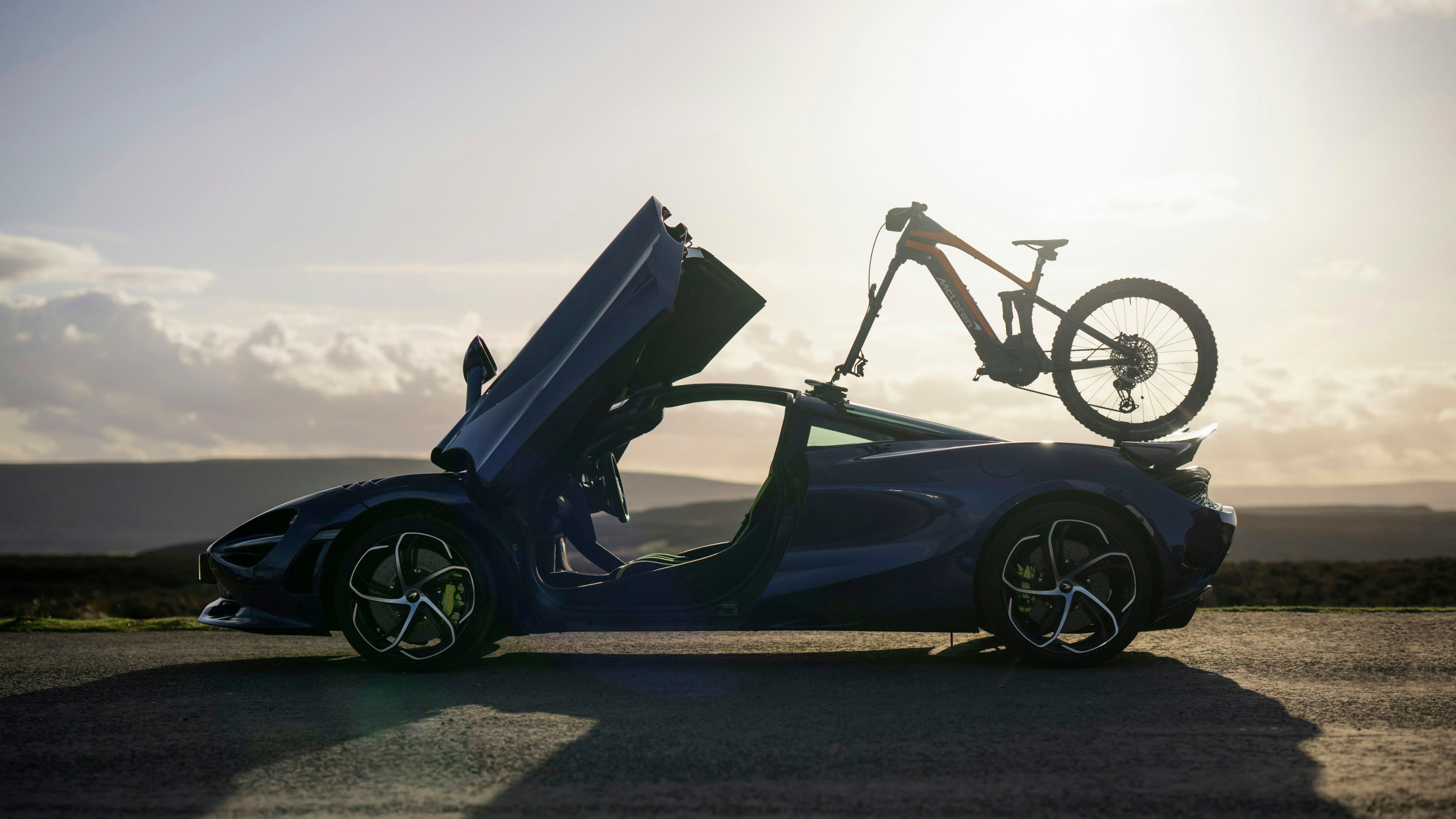 Sports carmaker McLaren enters the performance e-bike market
Sports carmaker McLaren enters the performance e-bike marketMcLaren Bikes’ four new machines bring speed, technology and style to electric mountain biking
By Jonathan Bell
-
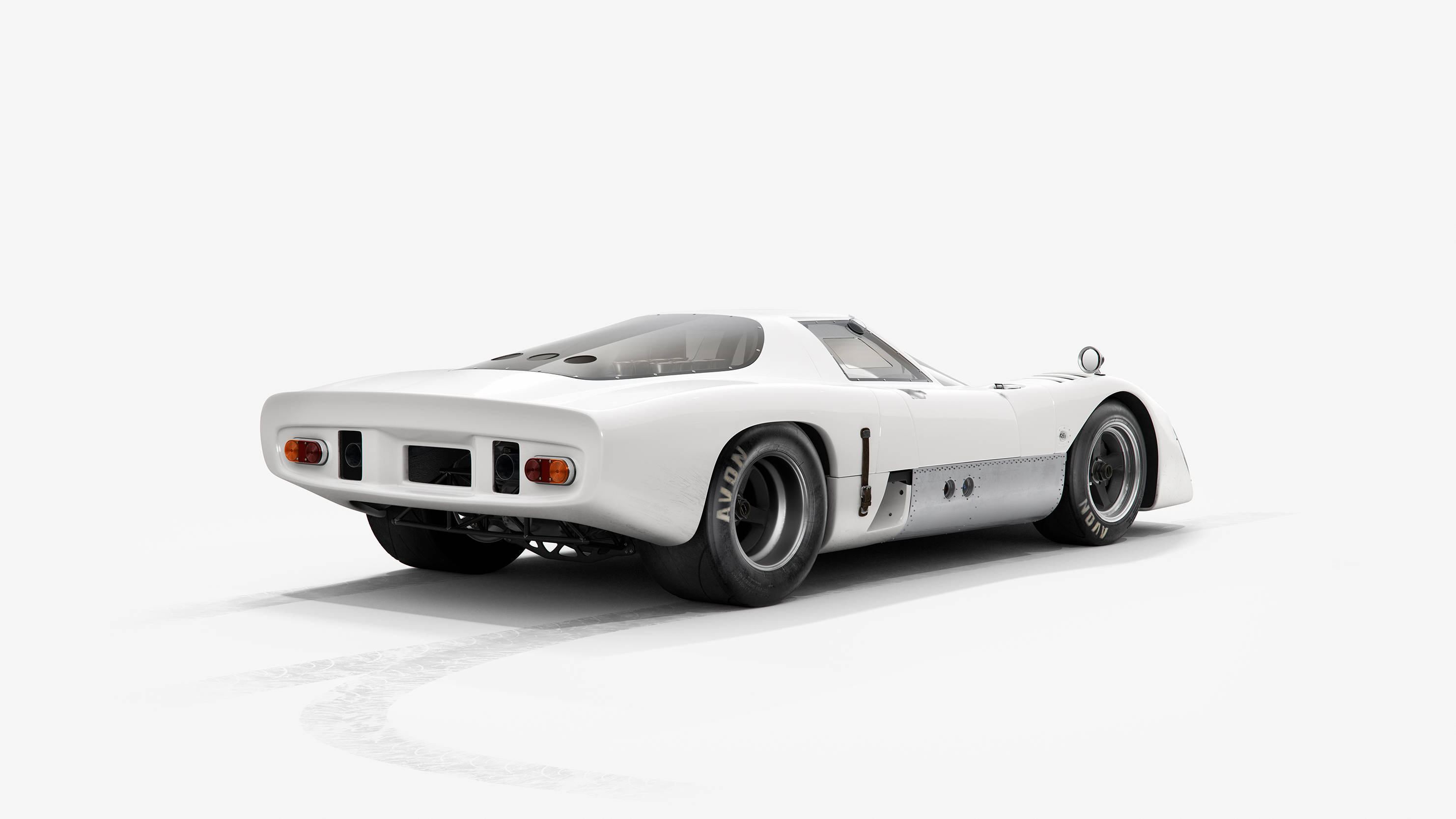 McLaren M6GT is the latest in INK’s series of ‘plain bodied’ racing cars
McLaren M6GT is the latest in INK’s series of ‘plain bodied’ racing carsINK reimagines the McLaren M6GT, dubbed ‘Bruce’s Unfinished Masterpiece’, as a purist piece of automotive sculpture
By Jonathan Bell
-
 Peugeot’s sparky 308 gets hybrid power and handsome lines
Peugeot’s sparky 308 gets hybrid power and handsome linesThe Peugeot 308 proves that mass-market design needn’t be dull, blending hybrid power with sharp lines and excellent detailing
By Jonathan Bell
-
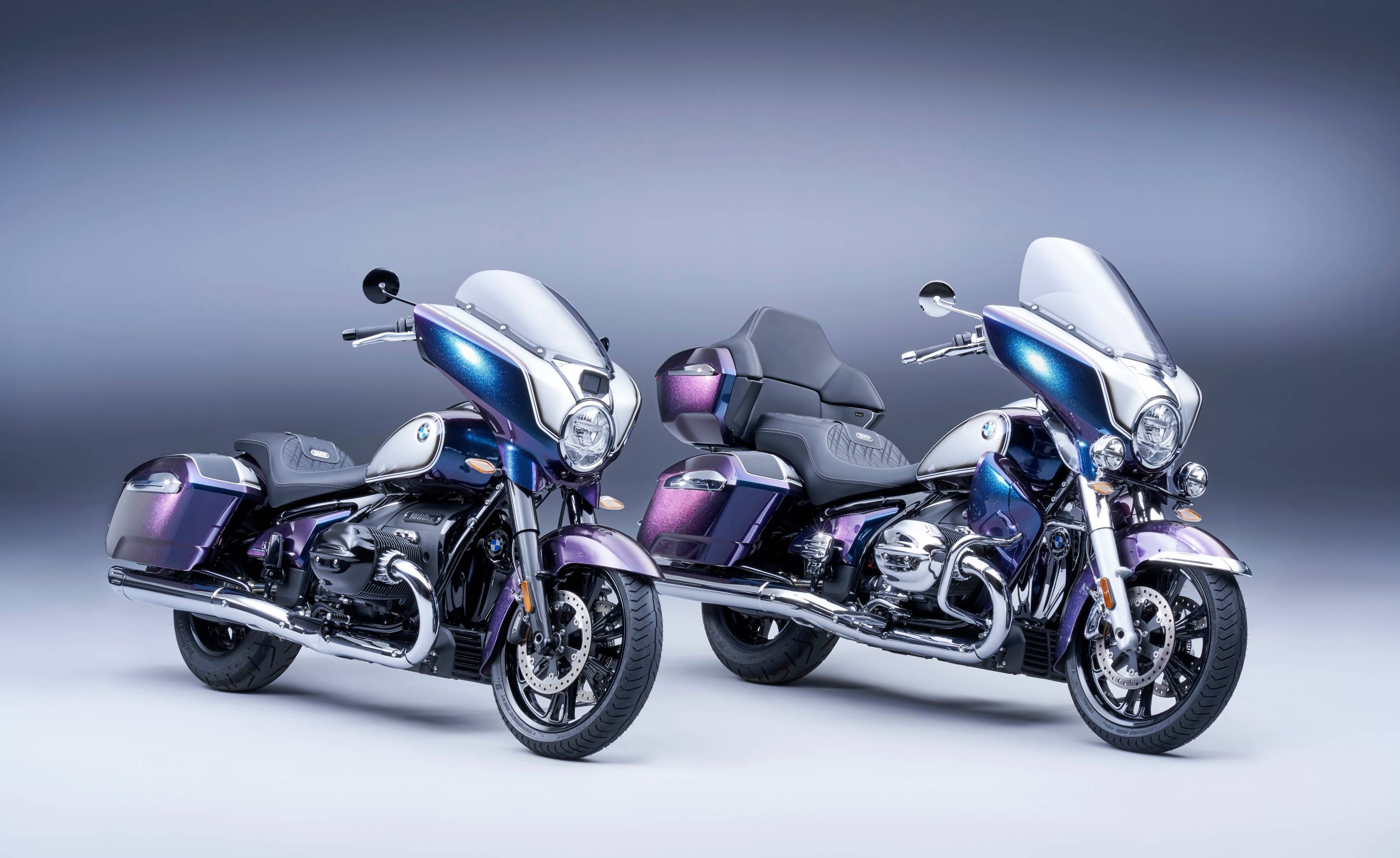 BMW Motorrad brings out the big guns for its newest cruisers
BMW Motorrad brings out the big guns for its newest cruisersBMW Motorrad R 18 Bagger and Transcontinental set the tone for high-voltage cruising with a brand collaboration with speaker specialist Marshall
By George Chapman
-
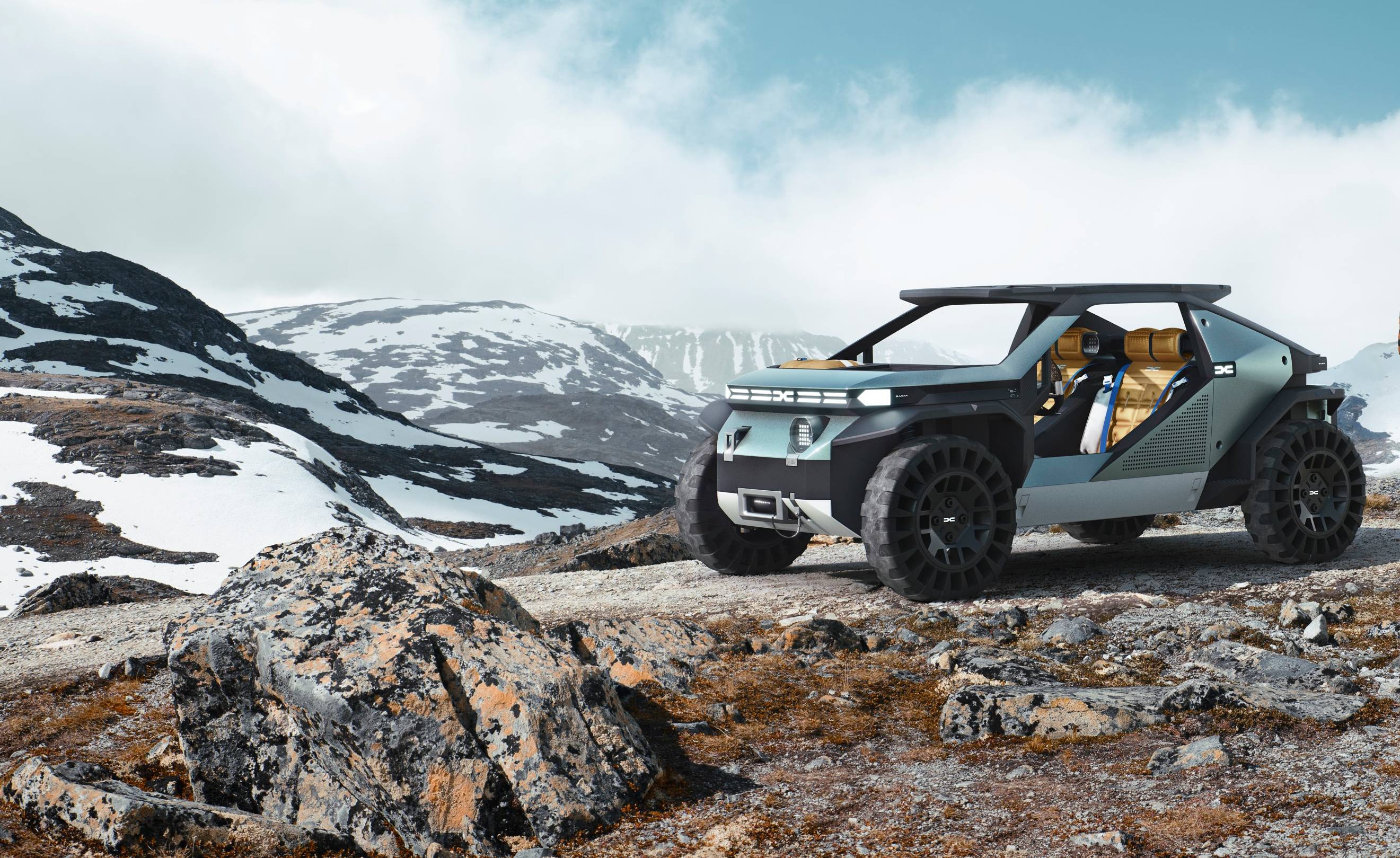 Dacia’s new Manifesto concept is a true outdoor utility vehicle
Dacia’s new Manifesto concept is a true outdoor utility vehicleUtilitarian auto brand Dacia sets a bold new agenda with its Manifesto, a concept car pitched at the active outdoor market
By Jonathan Bell
-
 The sun sets on traditional supercars at California’s Monterey Car Week
The sun sets on traditional supercars at California’s Monterey Car WeekMonterey Car Week, the world’s most prestigious car gathering, is showcasing ever-more extravagant special editions, coachbuilt cars and all-new electric concepts. Here are seven key machines from 2022
By Rory FH Smith